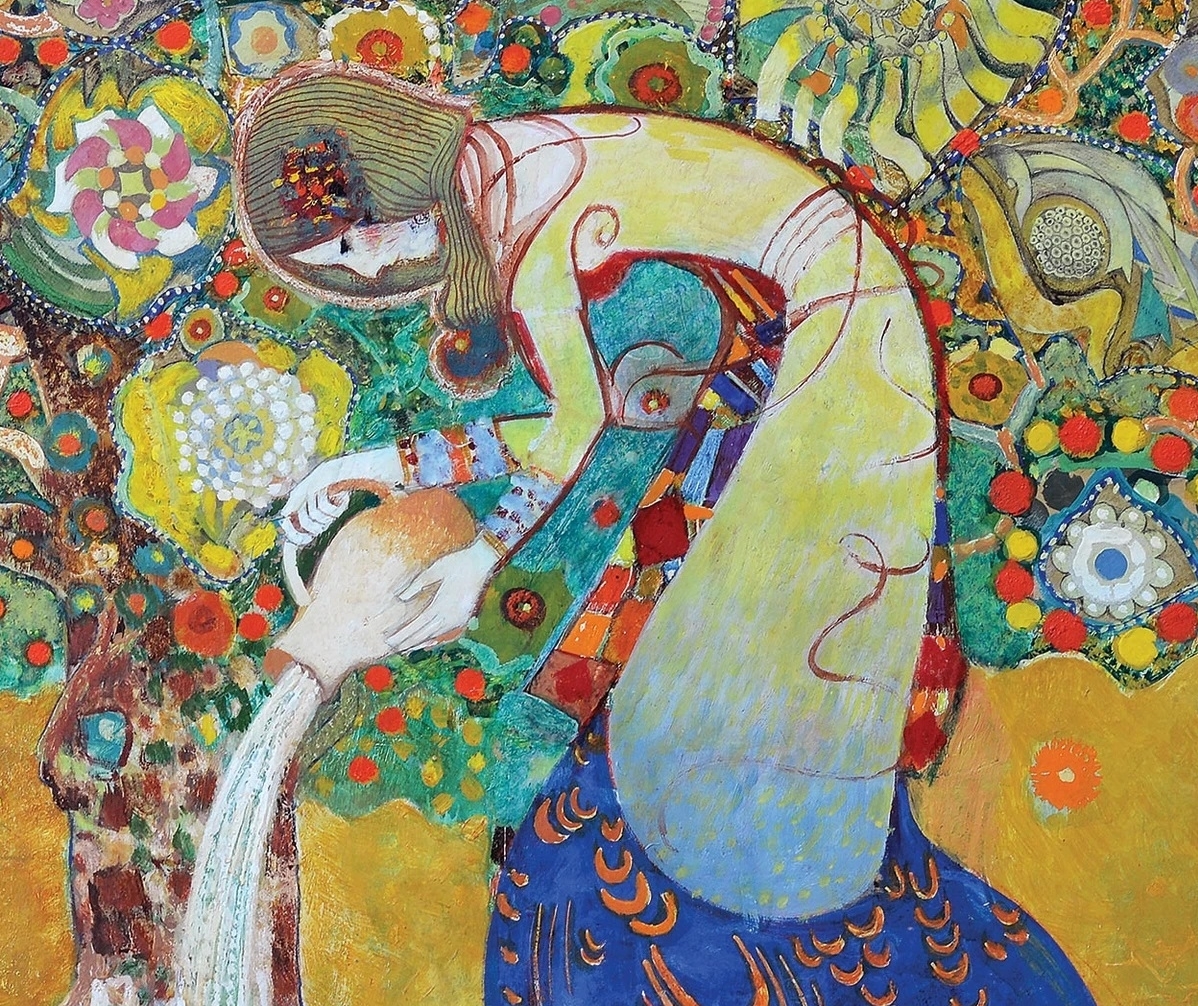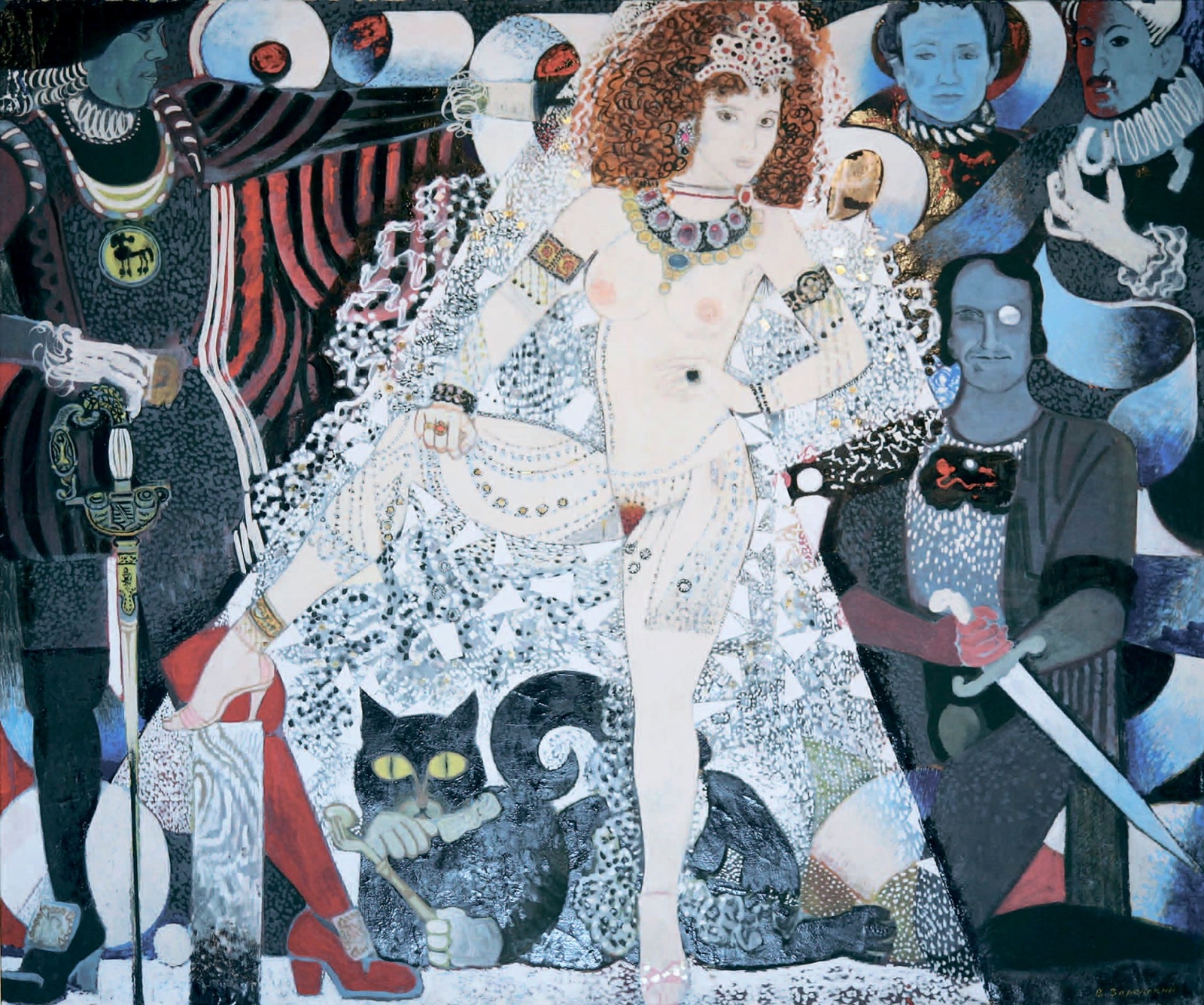Viktor Ivanovich Zaretsky (1925-1990) is called the Ukrainian Gustav Klimt. In fact, the influence of Klimt in the artworks of this Ukrainian artist is quite obvious. However, this does not mean that he just copied the works of the Austrian painter. Zaretsky developed his own artistic language, which made his paintings unique.
Zaretsky (1925 in Bilopillia, Sumy okruha, 1990 in Kyiv) was a 20th-century Ukrainian painter. A graduate of the Kyiv State Art Institute in 1953, he taught there and worked as a graphic artist.
He painted realistic genre canvases (see Genre painting) in the Donbas and in Chornobyl raion, such as Flax Gathering (1960) and Girls (1962). He collaborated with his late wife, Alla Horska, and other artists in creating large mosaics and mixed-media murals, such as Prometheus, Earth, and Fire, in Secondary School No. 47 in Donetsk, The Tree of Life and Dream-Bird, in the Ukraina restaurant in Mariupol, and The Flag of Victory, in the Young Guard Museum in Krasnodon.
For signing a public letter protesting against the political trials of Ukrainian artists and intellectuals in 1965–6 he was reprimanded by the Communist Party and ostracized by the Union of Artists of Ukraine.
In the 1970s he abandoned socialist realism in favor of an art nouveau style. His favorite themes became women and nature. The threat of ecological disaster is expressed sharply in his paintings Beauty Abandons the Earth, Sign of Calamity, Ozone Hole, and Atomic Winter.
His late works include Klimtesque paintings, such as Angels (1988) and Portrait of Liudmyla Kozachenko (1987). A catalog of his works was published in 1991.


























Nessun commento:
Posta un commento
Info sulla Privacy